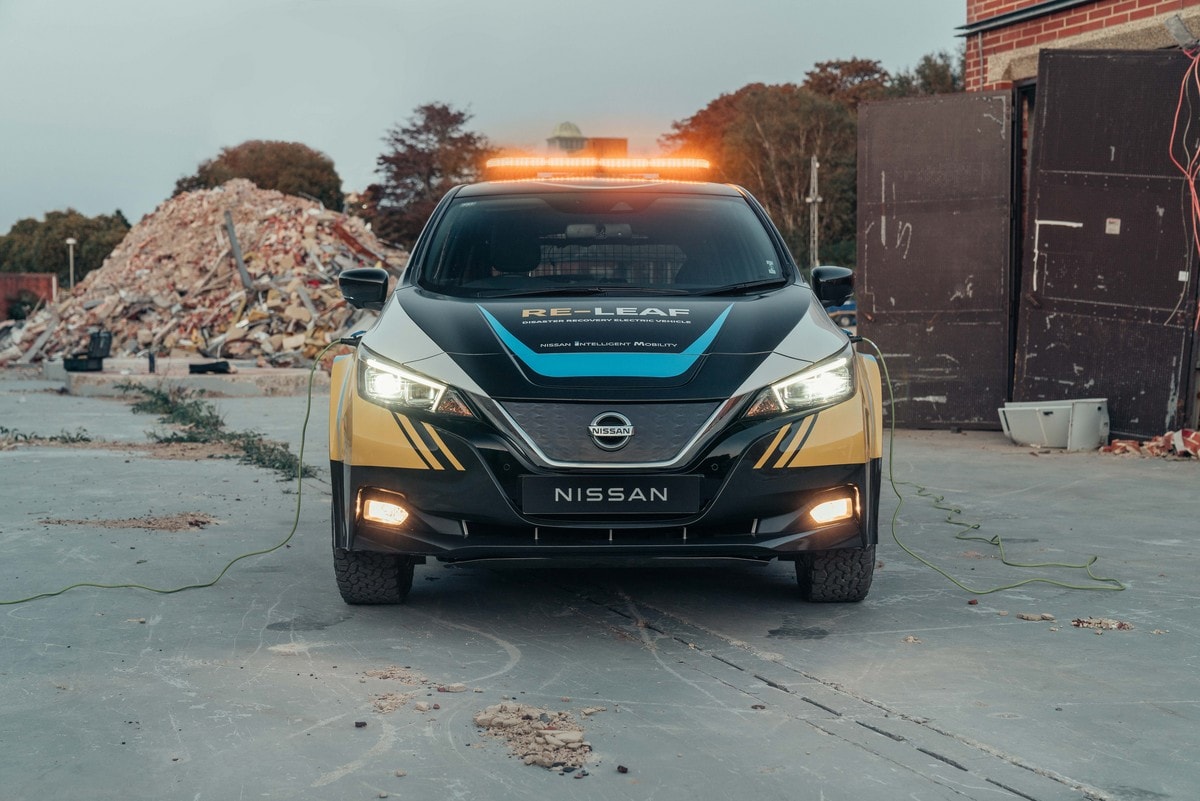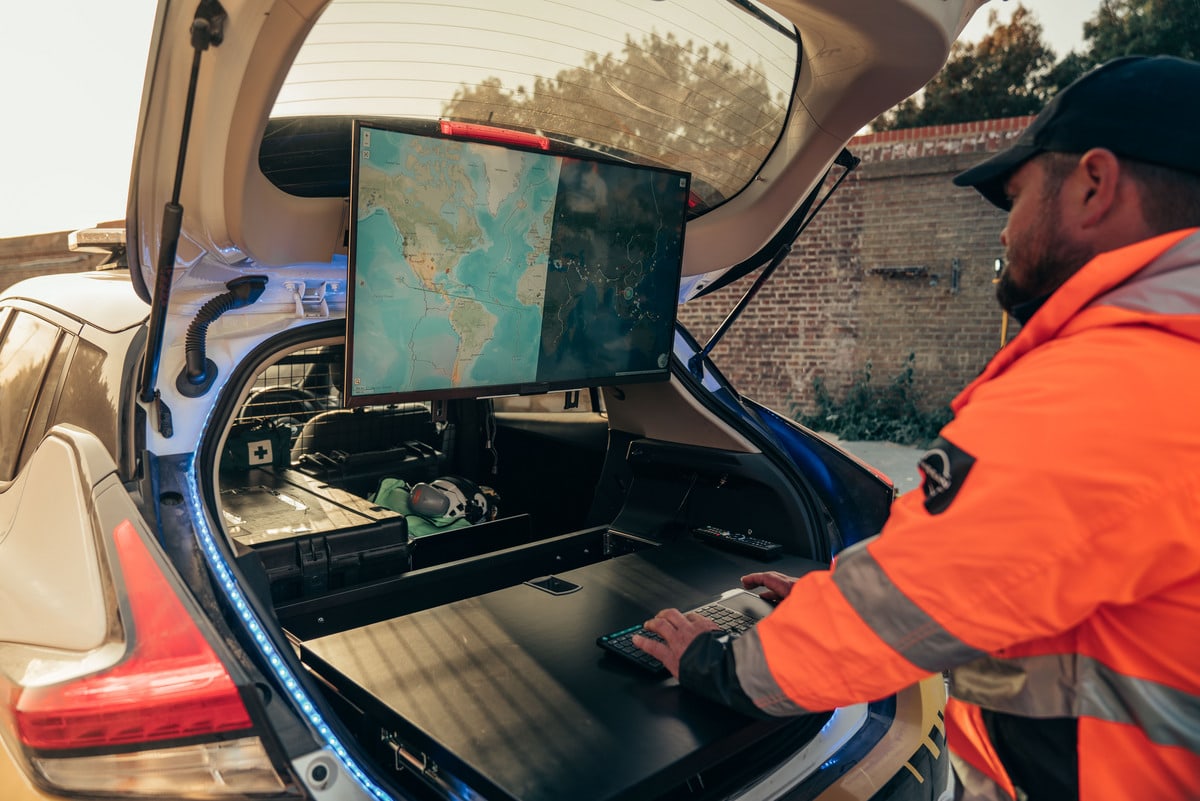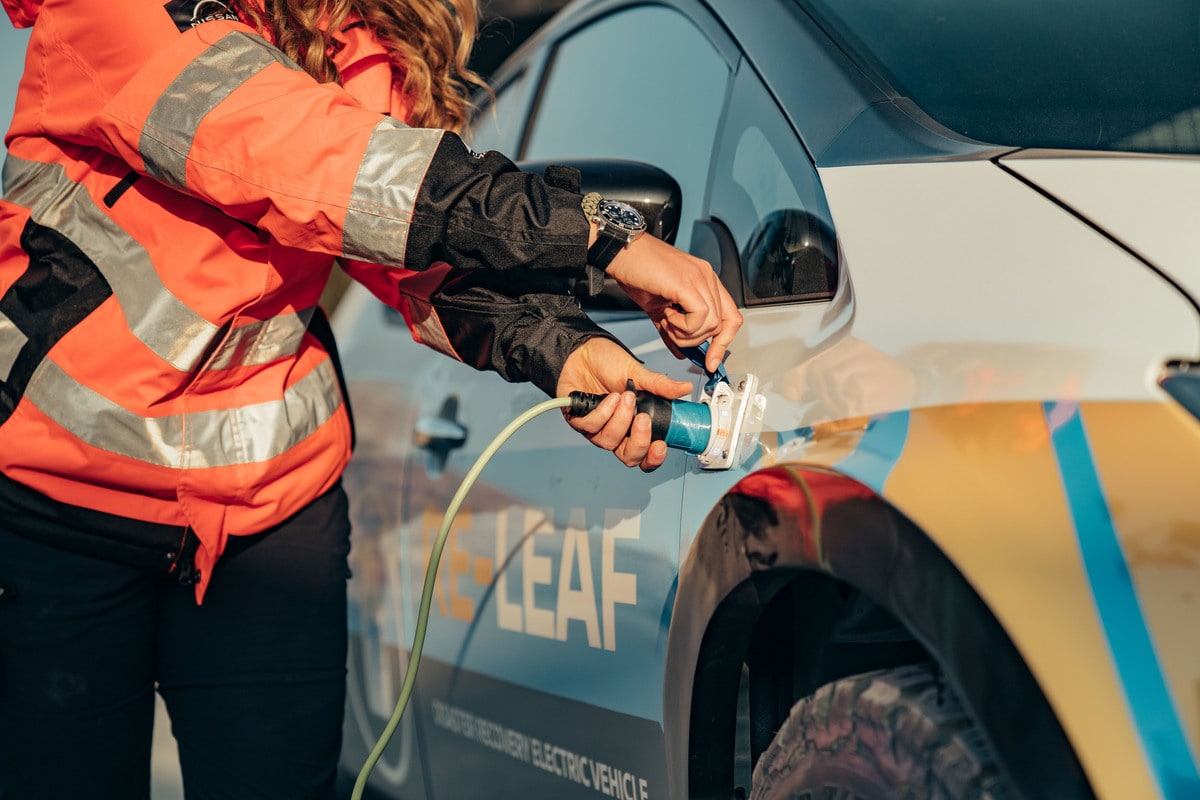Nissan: In emergency power from the Re-Leaf
DOUBLE USE With Re-Leaf from Nissan, rescue workers can drive to disaster areas to provide electricity for emergency supplies and reconstruction thanks to higher ground clearance and other modifications. In Japan, Nissan has already been using the Leaf as an emergency power supplier and means of transportation in crises since 2011. Via externally mounted waterproof sockets, electrical devices can be directly connected to the powerful [...]
In Japan, Nissan has already been using the Leaf since 2011 as an emergency power supplier and means of transportation in crises.
Externally mounted waterproof sockets allow electrical devices to be connected directly to the vehicle's powerful lithium-ion battery.
In this way, medical devices, communications, lighting and other equipment can be operated even after the public power supply fails.

Emission-free mobile energy suppliers
According to a 2019 World Bank report, they were responsible for 37 percent of power outages in Europe and 44 percent in the United States between 2000 and 2017. In such cases, it usually takes between 24 and 48 hours for the power supply to be restored.
During this time, electric vehicles can take over this function: as emission-free mobile energy suppliers for emergencies.
Cooperation with local governments
The potential of electric vehicles in such crisis situations is demonstrated by the Nissan Re-Leaf. Although the vehicle itself is only a concept for demonstration purposes, the technology is intended for actual use and can be implemented in this form. See details in the gallery.
In Japan, Nissan has been using the Leaf in crises since 2011, working with local governments on disaster response.
Use of bidirectional charging capability
The Re-Leaf takes advantage of the Leaf's bidirectional charging capability, which has been standard equipment since the electric car's introduction in 2010.
This means that the Leaf can not only pull from the grid to charge its battery, but also feed back into the grid or pass directly to electrical devices via V2X (meaning vehicle to everything).
A Leaf e+ with a fully charged 62 kWh battery is capable of supplying an average UK household with sufficient electricity for six days.
Power for multiple devices simultaneously
The Re-Leaf can operate several devices simultaneously in the event of a disaster. Examples of 230-volt consumers include electric jackhammers, compressed air blowers, 10-liter soup kettles, respirators or even a
Plant with 100-watt floodlight.
Once the power supply is restored, the electric vehicles can be recharged and used as an emission-free means of transport - in the case of the Leaf e+ for up to 385 kilometers per battery charge.













